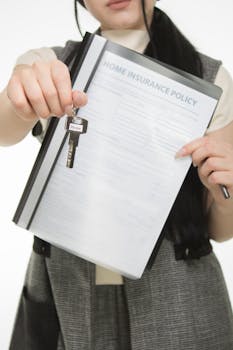Auto Insurance
The Difference Between Full Coverage and Basic Car Insurance: What Drivers Need to Know
Full coverage vs basic insurance explained: Discover the real-life differences, compare costs, and learn how to choose the right auto insurance for your needs without surprises.
Advertisement
Shopping for auto insurance, you’ll see full coverage vs basic insurance debated just about everywhere. Drivers compare both at renewal time, sometimes unsure which one actually suits their needs best.
Understanding the difference determines how much help you’ll get after an accident, theft, or vandalism. Your choice affects not just your pocketbook but also your ability to recover after the unexpected.
Stick around as we break down exactly what distinguishes full coverage from basic policies. You’ll see checklists, specific situations, expert tips, and practical lists to inform your next insurance call.
Identifying What Makes Insurance ‘Full’ or ‘Basic’ in Everyday Scenarios
This section walks you through real situations where full coverage vs basic insurance genuinely matters—so you can spot the differences before you pay out of pocket.
If your neighbor’s parked car gets hailed on, basic liability insurance won’t help—she’ll pay repair costs herself. With comprehensive, though, her insurer handles the repair bill after the deductible.
Why Full Coverage Includes More Than the Legal Minimum
With full coverage, your policy bundles several types: liability, collision, and comprehensive. For many, that means covers damage to your own car, even if you cause the accident.
A basic, state-minimum policy normally just covers bodily injury and property damage you inflict on others, nothing for your vehicle. Think of it as only covering what the law requires.
Ask an agent to describe your state’s minimums, then request a side-by-side quote for full coverage vs basic insurance. You’ll notice key differences in protection and price.
Parallel Comparisons: Different Drivers, Different Outcomes
Picture two drivers: Jamie carries only liability; Taylor goes for full coverage. After a fender-bender Jamie causes, Taylor’s car gets fixed thanks to collision coverage. Jamie, however, pays from savings.
Insurance agents see these scenarios all the time—a few dollars per month difference in premium can save thousands later. It helps to compare actual repair costs in your area.
For clarity, jot down last year’s repairs, their costs, and imagine facing those bills without the right coverage—that’s full coverage vs basic insurance in real life.
| Coverage Type | What’s Protected? | Example Scenario | Key Takeaway |
|---|---|---|---|
| Liability Only (Basic) | Injury/damage to others | You cause a rear-end collision | Your policy pays for their repairs, not yours—budget for your own costs |
| Collision (Full) | Your car’s damage in a crash | You back into a pole | Your insurer helps pay to fix your vehicle, minus deductible |
| Comprehensive (Full) | Theft, weather, non-crash losses | Car is stolen overnight | After deductible, your loss is covered—no giant out-of-pocket hit |
| Personal Injury Protection | Medical costs, sometimes lost wages | Whiplash after accident | Covers your bills quickly, regardless of fault in some states |
| Uninsured Motorist | Acts of uninsured/underinsured drivers | Hit-and-run incident | Still get help paying for repairs, minus worry over others’ coverage |
Choosing the Right Insurance: Deciding Based On Your Lifestyle and Needs
Making a choice between full coverage vs basic insurance means considering your life, job, and even where you park your car each night. A sharp checklist makes this decision easier.
When talking to an agent, mention your driving history, commute, and whether you owe money on the car. These factors shape which type of coverage might suit you best this year.
Checklist: Know Your Personal Risk Factors
If your daily commute runs through heavy traffic, collision coverage is safer. Those living in areas with more storms or theft reports see value in comprehensive insurance.
Drivers with older, paid-off vehicles may decide the added cost of full coverage isn’t worth it. Others, especially new car owners, prefer robust protection and peace of mind.
- Assess vehicle value – Use recent Kelley Blue Book prices to see if extra coverage is financially justified for your car’s market worth.
- Consider loan/lease status – Lenders typically require full coverage until you own the vehicle outright; drop only with written notice.
- Check local theft rates – If you park on city streets or in higher-crime neighborhoods, comprehensive coverage is a safety net.
- Estimate annual mileage – Higher mileage increases risk. If you drive daily, extra protection against accidents may add value fast.
- Account for savings – If a major repair would deplete your emergency fund, full coverage may actually protect your finances better.
Compare your list to last year’s out-of-pocket car expenses. Were any larger than your current insurance premium? That experience can guide a full coverage vs basic insurance choice.
Key Questions to Ask Before Deciding on Coverage
Ask your agent: “If my car’s totaled, how much will my insurance pay, and how quickly?” Get clear, dollar-specific answers about coverage limits for both policy types.
Another useful script: “If I dropped full coverage, how much would I actually save per month, and what would I be giving up in exchange?” Write down the numbers to compare.
- Request claims process times – Some policies offer faster payout or easier digital claims, which matters after a stressful incident.
- Clarify deductible amounts – A lower deductible costs more in premium, but you pay less when a claim occurs; match deductible to your budget.
- Review included extras – Some full coverage policies add roadside assistance or rental car reimbursement for just a few more dollars each month.
- Check accident forgiveness – This add-on can stop your rates from spiking after a first accident; see if it’s available or standard.
- Ask about multi-policy savings – Bundling auto and renters or homeowners insurance can often offset a full coverage upgrade cost.
Don’t hesitate to request every number in writing or via email. Clear documentation helps review and compare full coverage vs basic insurance during annual renewals.
When Full Coverage Justifies Its Extra Cost for Different Types of Drivers
By exploring the logic behind higher full coverage premiums, you’ll see the payoffs and tradeoffs for drivers with new, financed, or older cars—and spot when upgrading makes financial sense.
Some drivers would tell you, “I like knowing a tree branch won’t bankrupt me,” while others say, “My car’s worth less than the deductible now.” Both have valid points worth analyzing.
Scenario: New Car Owners and Loan Holders
A bank or leasing company typically requires full coverage on financed cars. Full coverage vs basic insurance becomes a non-choice until the loan’s paid off.
If you drive home in a new SUV, verify that your collision and comprehensive limits match the current market value. Use the phrase: “I want coverage for the full payout amount this year.”
Keep a calendar reminder to review coverage when your loan term ends so you can downgrade to basic insurance if your financial risk drops.
Scenario: Owners of Older or High-Mileage Vehicles
When you own an older sedan outright, update your policy to reflect the car’s depreciated value. Insuring a $2,000 vehicle with full coverage may not be cost-effective.
Ask your agent, “Will I ever collect more from a claim than I’m paying extra for full coverage?” If not, request a quote for basic insurance and compare net savings for the next year.
Make the switch at your policy’s next renewal period to avoid overlap and ensure you’re not double-covered.
Financial Consequences: Out-of-Pocket Scenarios You’ll Want to Avoid
Learning what you’re financially responsible for with each type of policy can help you plan smarter, budget your expenses, and avoid nasty surprises after an accident or loss.
Basic insurance holders sometimes say, “I’ll fix my own car if something goes wrong.” Full coverage holders, however, say they’d rather pay a predictable premium than risk a sudden $3,000 bill.
Handling Large Repair Bills Without Full Coverage
If you waive full coverage, stash at least $1,000–$5,000 in savings to manage accidents, theft, or animal damage to your car. Otherwise, you’ll be scrambling to arrange repairs.
A practical checklist: Confirm what repairs your current policy pays for, list gaps, and calculate your emergency fund against the real cost of common vehicle repairs in your area.
Write down a direct script for emergencies: “I planned for this by saving each month,” or “I now need a payment plan for these repairs.” Track expenses for next year’s insurance decision.
Making Claims: Process, Timing, and Results
If you carry full coverage vs basic insurance, you’ll see different claims processes. Full coverage speeds up major repairs and helps you replace your car, not just cover others’ costs.
A typical script for calling in a claim: “My policy number is ___. My car was hit and can’t be driven: how soon can I get the repair approved?” Document every answer for future reference.
Always ask for written estimates and processing timelines from your adjuster. Keeping records helps you compare real experiences—another key input for full coverage vs basic insurance at renewal.
Extra Perks and Potential Exclusions Hidden in Policy Details
Reading policy fine print helps you find extras—rental car, glass repair, roadside help—that can save headaches later. You’ll also catch exclusions that show exactly what’s not covered.
For example, some comprehensive policies exclude flood or aftermarket parts damage. Instead of assumptions, get every extra perk or exclusion in writing during your annual review.
Bundling Add-Ons: When Extras Tip the Balance
Some drivers say, “I just want my insurance to handle a rental if my car’s in the shop.” That’s possible only with certain full coverage policies or upgrades.
Ask: “Does full coverage include rental or towing automatically, or do I pay extra?” Compare the monthly add-on cost to what you’d pay for those services out-of-pocket during a real event.
Revisit all add-ons during policy renewal; needs and car condition change annually, so what was unnecessary last year might be smart protection now. Mark your next review on a calendar.
Identifying Policy Exclusions Before They Surprise You
Compare written lists of what’s not covered under both full coverage vs basic insurance. Cross out risks you’re willing to self-insure, and circle those you want included.
If your agent says, “This doesn’t include flood damage” or “Glass isn’t always covered,” ask for a cost breakdown of any gap-filling add-ons. Get exclusions in writing for household discussion.
Each year, revisit exclusions with your agent, especially if your job, commuting route, or zip code changes. Adjust your policy or savings accordingly so surprises don’t turn into emergencies.
Key Takeaways: Full Coverage vs Basic Insurance in a Nutshell
The main difference between full coverage vs basic insurance comes down to one thing: who pays for YOUR car’s loss—your savings account, or your insurer. Make that call before an accident.
Policy features, your vehicle’s value, your budget, and your risk tolerance all shape whether you select full coverage vs basic insurance for the current year. Review these criteria at every renewal.
A little planning and a thoughtful checklist can save dollars and headaches. Use this article as a guide next time you talk with your insurance agent and tailor your policy for real-world peace of mind.





